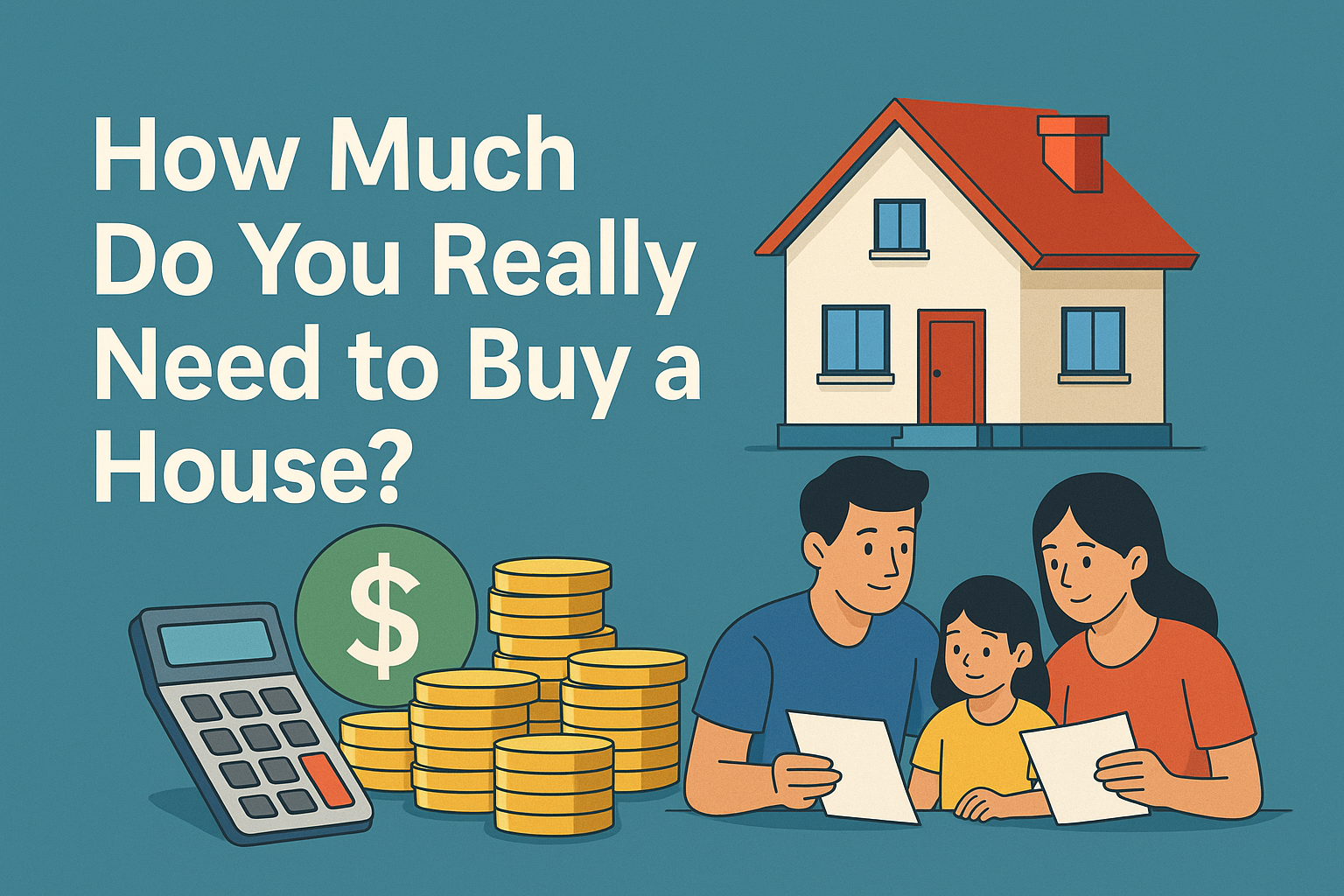A Simple Guide to Costs, Loans, and Budgeting for Filipino Homebuyers
Buying a property — whether it’s a house, condominium, townhouse, or residential lot — is a big goal for many Filipinos. Whether you’re a first-time buyer, an OFW, or planning to start a family, it’s important to know all the costs that come with owning a property. It’s not just about the selling price — there are many other fees, payments, and responsibilities you need to prepare for.
This easy-to-understand guide will walk you through the real costs and help you get financially ready, whether you’re planning to buy a home in the suburbs, a condo in the city, or even a lot to build on later.
Why Saving for a Down Payment is Important
The down payment is the first major payment you make before your loan starts. In the Philippines, this is usually 10% to 20% of the total price of the house, condo, or other property. Some developers may offer promos with lower down payments, but it’s always better to save as much as you can.
✅ A bigger down payment helps you:
-
Pay less monthly
-
Lower the total interest you pay
-
Improve your chances of loan approval
-
Possibly avoid paying for mortgage insurance
Tips to Save for a Down Payment:
-
Open a separate savings account just for your future home or condo
-
Set aside a fixed amount every payday
-
Cut back on non-essential spending like online shopping or takeout
-
Monitor your savings progress regularly
You can also check Pag-IBIG housing loan programs or other government support for first-time buyers to help with your down payment.
Loan Options You Can Use to Buy a Property
You don’t need to pay the full amount up front. There are several ways to finance your home or condo purchase:
🔹 Bank Loans
Banks are a common choice for homebuyers. Most require:
-
Down payment of 10–30%
-
Proof of income and stable job
-
Good credit record
-
Complete documents (valid IDs, COE, etc.)
Interest rates and payment terms may vary by bank.
🔹 Pag-IBIG Housing Loan
Pag-IBIG is a trusted option for many Filipinos because of its low interest and long payment terms (up to 30 years).
Ideal for:
-
First-time buyers
-
Employees with regular income
-
OFWs
Requirements include active Pag-IBIG membership and proof of income.
🔹 Rent-to-Own or In-House Financing
For those who don’t qualify for bank or Pag-IBIG loans, rent-to-own and in-house financing may be easier to apply for. These are often offered by developers directly, but they usually have higher interest and shorter terms. Always read the full contract before signing.
These options are available whether you’re buying a condo unit, a townhouse, or a lot.
Other Costs You Need to Prepare For
Aside from the price of the property, there are one-time fees and monthly expenses that come with owning any kind of property.
One-Time Fees (Before Move-In)
-
Down Payment: 10–30% of total price
-
Reservation Fee: ₱10,000 to ₱50,000 (often part of the down payment)
-
Closing Costs (around 3–5% of the property price):
-
Transfer Tax
-
Documentary Stamp Tax
-
Registration and notary fees
-
Title transfer fees
-
💡 Some developers offer “all-in” deals — make sure to ask for a complete breakdown of fees.
Monthly or Regular Expenses
-
Monthly Amortization: Loan payment based on your loan amount and terms
-
Real Property Tax (RPT): Paid once a year to your city or municipality
-
Homeowners’ Association (HOA) Dues: Especially required for condos and subdivisions
-
Utilities: Electricity, water, internet, gas
-
Insurance: Fire/home insurance, sometimes required by banks
These ongoing costs apply whether you buy a condo, house, or even just a lot that you plan to build on later.
How to Create a Realistic Budget
Before you buy, it’s important to understand your personal budget so you don’t face financial problems later.
Step 1: List your total income (salary, bonuses, side hustles)
Step 2: List your regular expenses (bills, groceries, loans, transport)
Step 3: Apply the 28/36 Rule:
-
Spend no more than 28% of your monthly income on your home loan
-
Spend no more than 36% of your income on all debts combined
Also, prepare an emergency fund for unexpected expenses like medical needs, repairs, or temporary job loss.
💡 If the home or condo you want is still out of your budget, start with a smaller or more affordable property. You can always upgrade later.
Final Thoughts: Be Financially Ready, Whatever Property You Choose
Whether you’re buying a house, condo, townhouse, or a lot, proper planning and saving are key. Understanding all the costs — not just the sale price — will help you avoid stress and make better decisions for your future.
Don’t be afraid to ask for help from a real estate agent, loan officer, or financial advisor. Buying a property is a big step, but with the right knowledge and preparation, it’s a goal that many Filipinos can reach.

Comments